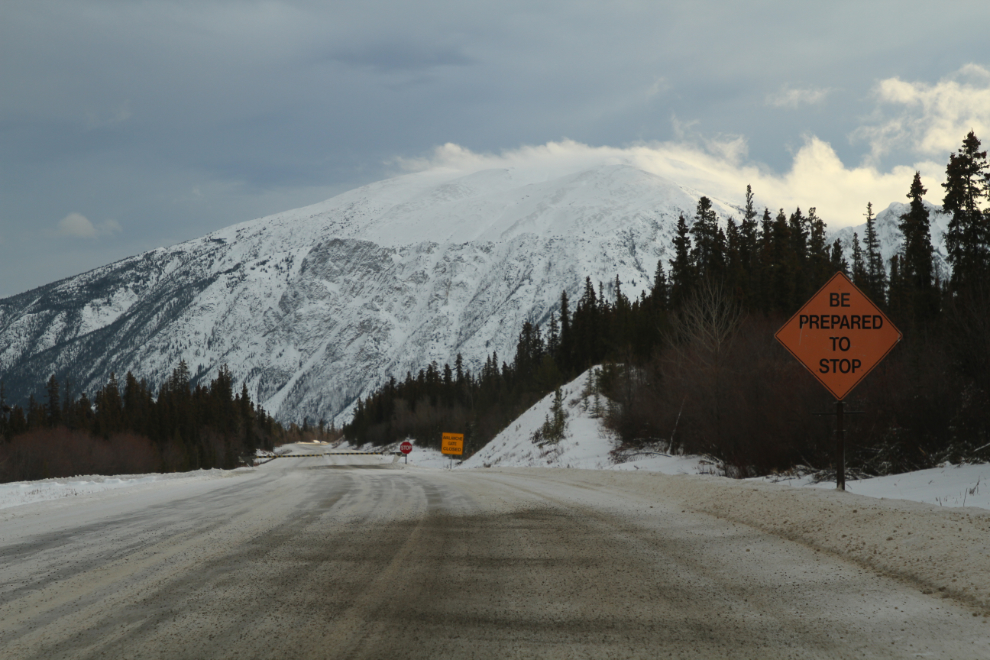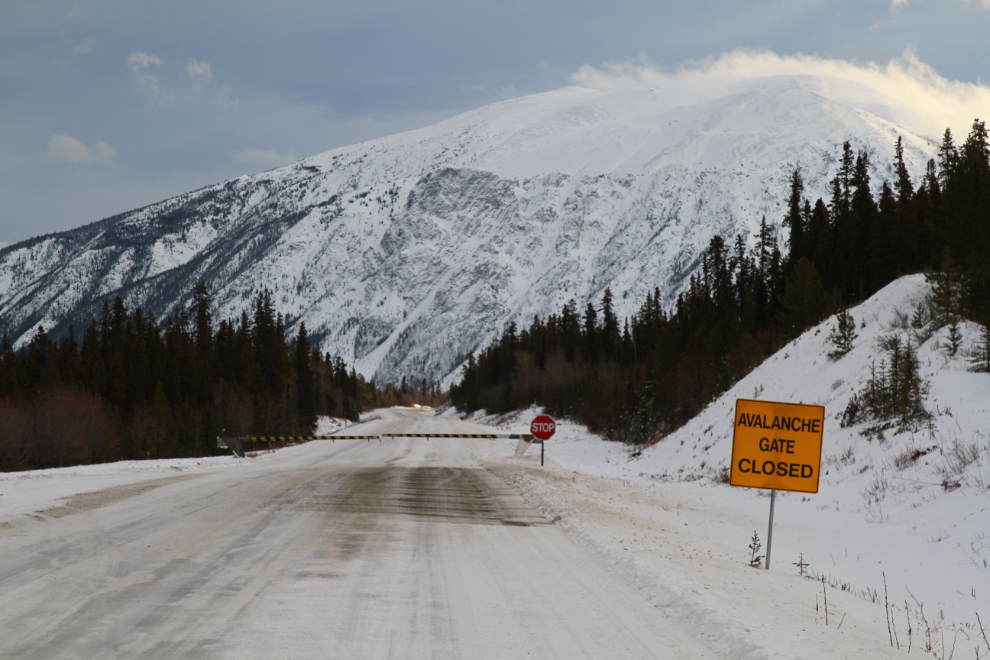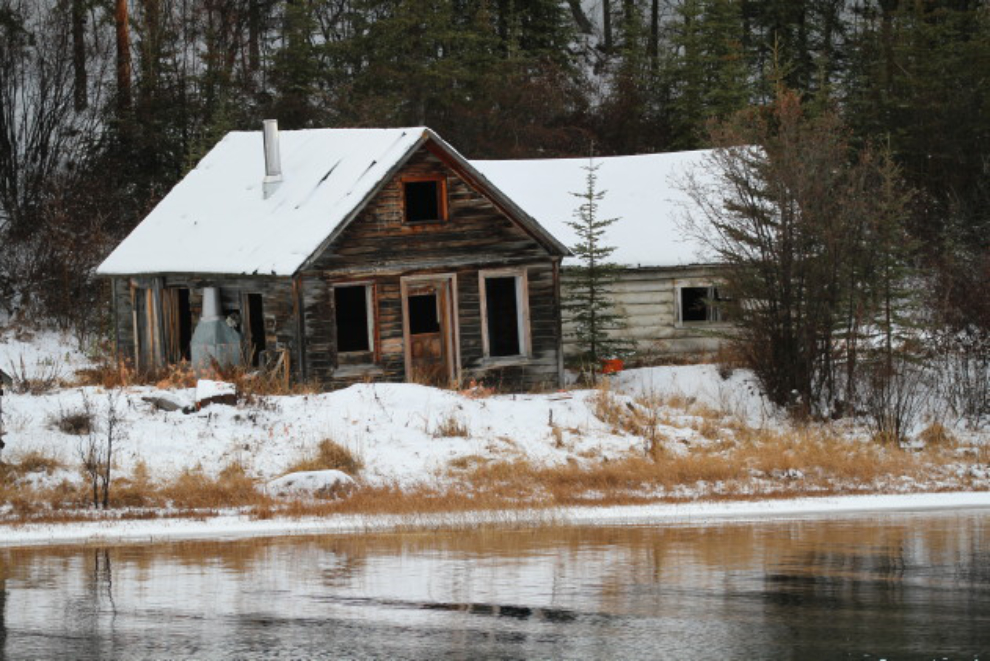A drive to Carcross, and an update on my brain injury
It’s now been 7 weeks since I’ve posted here – the longest break since I started the blog in 2007. This post will sort of be in two parts. The first will be the sort of thing you expect here – a photojournal of one of my wanders. The second part will be about the brain injury that has brought my very active life to a screeching halt for now.
I spend my days now in two ways now – going through old newspapers gathering information that I sometimes post in my Yukon History group, and browsing through my tens of thousands of photos. The photo-browsing got me to thinking that I should fly somewhere – anywhere, just to get some window-seat time, overnight and fly home again. To do that, I needed to test my ability to travel, so on Friday I decided to drive to Skagway. Being out for 6 hours or so, with winding roads, would be a good test.
We’re down to just over 7 hours of light now, so I was in no big hurry to hit the road. The temperature was -4°C when I left home, +1 in town when I fueled up 10 minutes later. The temperature was all over the map as I headed south – the cold spot was at Robinson as is often the case, at -7°C. A few miles further, it was +3 when I shot this first photo at 10:05. At Carcross a few minutes later, it was back down to -1. Crazy.

I stopped just south of the new Carcross bridge to get a photo of what I thought was a crew starting demolition of the old bridge.

Well, this was a surprise! There was no cell service there, but when I got back to Carcross I checked 511yukon and discovered that not only was the highway between Carcross and Skagway closed because of “black ice”, roads in the entire southern Yukon were under a Travel Advisory.


I decided to hang around Carcross for a bit and see if the highway would open. On closer examination of the work going on at the bridge, the crew was just taking down the last of the wooden framing around the new bridge.

There was some interesting light that allowed for some good photo ops, like the next one shot at Caribou Commons.

Some of the long-abandoned cabins on the opposite side of the Nares River are always good subjects as they slowly fall apart.

The Tutshi memorial, built from the remains of the famous steamboat that burned on July 25, 1990.

While the weather was quite pleasant in Carcross, it was certainly Winter right above us on Brute Mountain.

At 11:30 I drove back to the avalanche gates, but no luck – still closed, and there was no indication at 511yukon when that might change. By this point, though, it didn’t really matter. I was starting to get pretty sick, and getting home would be all I could manage.

When I start to “hit the wall” now, things deteriorate in a hurry. Within a few minutes, I really didn’t know if I would be able to get home without a nap.

By the time I got home, I was done. If Tucker and Bella hadn’t been anxiously waiting for me in the window, I would have gone to sleep in the car. It was all I could do to get in the house and to bed.
So, the test did not go well. I can’t drive very far (so I can’t fly anywhere – the point of the test), and I can’t walk very far.
————————-
That was Part 1 – the easy part because most of it was what I’ve done here for many years. Part 2 is much tougher.
My regular readers know that I injured myself in a fall during a hike back on August 7th, and am still having a lot of problems. If any of the people who get paid a lot of money to know this stuff knows what’s wrong with me, they’re keeping it a secret. My neurology team “can’t put a name to it,” and the concussion therapist says it’s not a concussion. It’s a brain injury of some sort, though – perhaps exactly what doesn’t matter. It’s a very complex subject with each person having their own set of issues, and solutions.
Some people say that rest is important, but many more say that you need to work through it to whatever degree you’re able, and that’s the one I’m going with. My final neurologist said that while there’s no recommended treatment or therapy, “rest is not your friend.” Rest is my friend in one way, because that’s when I don’t feel too bad – activity soon makes me feel like shit. Three to four hours of anything is about my limit – then I “hit the wall” and need to go to bed. With brain injuries, you can’t work through it in the way you do sports or hard physical work. When you hit the wall ater a brain injury, you’re finished.
Brain injuries are very often life-changing, as has been the case for me. Among the symptoms, they produce headaches, fatigue, dizziness, poor coordination, disorientation (stairs are awful for me), difficulty in concentrating and in processing complicated questions, difficulty in making decisions, impatience and emotional outbursts, and depression. Depression is a big part of it for many, and the suicide rate for people with brain injuries is at least twice as high as for uninjured people. That rate increases as the severity of the injury increases. I’ve had some extremely dark days.
For many, conversations are difficult, and avoided whenever possible. I’ve apologized on Facebook to the many people whose messages and phone calls I haven’t returned. Processing the thoughts is difficult, and even something about the frequency of the cell phone is annoying.
The dizziness, poor coordination, and disorientation make walking difficult. Some people say I walk like I’m drunk. I often use a cane – that will be the case this afternoon when I go to my concussion therapist because of the distance I have to walk, much of it on icy surfaces. When grocery shopping, the cart is my walker.
A support network is extremely important during the healing process. For me, that includes pets. Tucker is my nurse. He’s extremely intuitive, and demands that I join him in bed when I don’t feel good, most recently a couple of hours ago while I was in the middle of writing this.
I’ve joined a couple of brain injury support groups. While they both provide lots of information about people’s different experiences, they can also be quite discouraging. My neurologists said I’d get better “eventually” but refused to say whether that was weeks, months, or years. I see people in the groups who have been suffering for 4, 7, 10 years. One of the members posted a Brain Injury Identification Card that has a list of symptoms, to help people understand how to deal with the card carrier. She said “I received this card in the mail today. While it’s probably a good thing to carry, it feels like defeat. I have made a lot of progress, but I still struggle accepting this new version of life. All the things on the back of this card are true, but I wish they weren’t. Seeing it in writing makes it feel too real, too permanent. I cried and cried when I saw it. Even though I know it’s good to carry, it just makes me so sad that it’s necessary. I want to wish this all away.”
For now, I have to embrace small victories – sometimes very small ones. I also have big events ahead that I keep focussed on. In April I’m going to drive the motorhome back to Vancouver Island for a few weeks, and I’ve recently booked a 22-day cruise in South America that includes 4 days in Antarctica. I WILL be better for both of those.
Motivational images are always around me now. Usually made by other people, but sometimes I make my own, like this one made with a photo shot from my Carcross cabin in early March 2007. That bit of blue sky off in the distance is very important to me.

I see we have some sunshine and some great aurora forecasts coming up in the next week, so I hope to have more photos of this amazing country to share with you soon.
